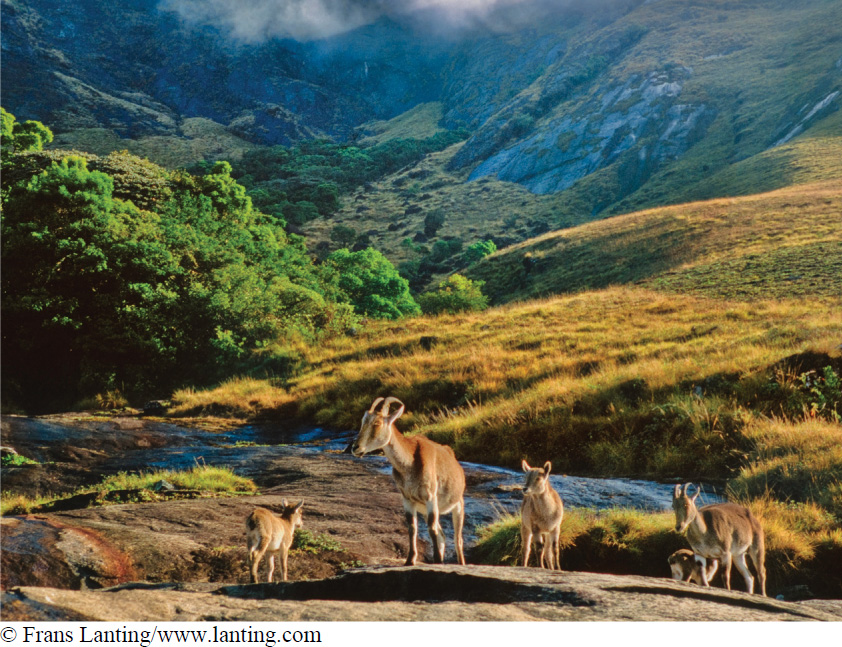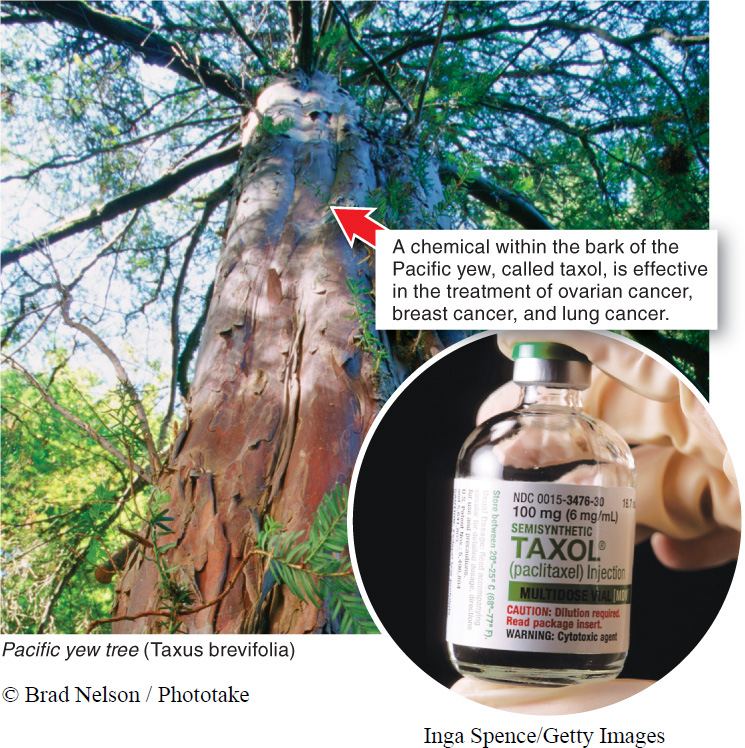
In the Pacific Northwest of the United States, a medium-

Consider also the following:
- The chemicals vinblastine and vincristine, isolated from the Madagascar periwinkle (Catharanthus roseus), are so effective in treating leukemia and Hodgkin’s lymphoma that both diseases, formerly incurable, are now curable in the vast majority of people.
- The chemical ancrod, found only in the Malayan pit viper snake (Agkistrodon rhodostoma), dissolves blood clots and is effective in treating some heart attack and stroke patients.
- Epibatidine, a poisonous compound in the saliva of a small frog (Epipedobates tricolor) that lives in Ecuador, is 200 times more effective than morphine in relieving pain and is non-
addictive.
Why would another species produce a chemical that fights cancer in humans?
These are just a few examples—
651
Plants and animals aren’t the only species with great value to humans. Microbes, too, have great utility. In the next section, for example, we see that hydrocarbon-

Medicinal compounds derived from plants and animals, as well as the activities of oil-
But viewing the value of biodiversity only in the context of our abilities to extract medicines or to better process the messes we make is to take much too narrow a perspective. Taking a philosophical perspective, the United Nations has asserted that biodiversity has an intrinsic value—
And, in describing the extrinsic or utilitarian value of biodiversity, scientists and economists use the concept of ecosystem services to highlight the benefits to humans that come from biodiversity and natural ecosystems. In a 2005 United Nations study that involved more than 1,300 scientists, the researchers identified four distinct categories of ecosystem services (FIGURE 16-3).

- Provisioning services. These include the many useful products that humans obtain from nature, including food, spices, minerals, and pharmaceutical and industrial products.
- Cultural services. Much of the value that humans gain from biodiversity isn’t easily assigned a dollar value—
but that value can be extremely important just the same. We think of a field of flowers or a deer in the woods as beautiful to look at and pleasant to experience, for example. Or we make use of images of animals and plants to convey meaningful abstract ideas: the dove as a symbol of peace; the oak as a symbol of strength; the butterfly as a symbol of transformation; and the owl as a symbol of wisdom. Beyond the aesthetic, symbolic, and spiritual values of biodiversity, cultural services also include recreational experiences, as well as scientific and other educational value. - Regulating services. Ecosystems provide numerous services relating to the regulation of our environment. These include climate regulation through carbon storage in plants; pollination; waste decomposition and detoxification; protection from natural disasters; and pest and disease control.
- Habitat services. Significant value from biodiversity and natural ecosystems also flows to humans in the form of soil formation, photosynthesis, and nutrient cycling.
When we recognize that people can view the same organism or gene or ecosystem and value it in different ways, we are on our way to making wiser conservation decisions. This knowledge, for example, can help us anticipate potential conflict when it comes time to invest limited conservation resources in conserving biodiversity and can help us seek out methods for balancing conflicting desires. We explore some strategies for making these difficult decisions later in this chapter.
652
TAKE-HOME MESSAGE 16.1
Biodiversity—
What is the fundamental difference between extrinsic (utilitarian) and intrinsic values when it comes to biodiversity?
The utilitarian values (economic, pharmaceutical, industrial, cultural, etc.) of biodiversity are quantifiable and, in some ways, far easier to explain than the considerable intrinsic value of biodiversity, which is more of a philosophical view that biodiversity has value independent of its importance to humans.